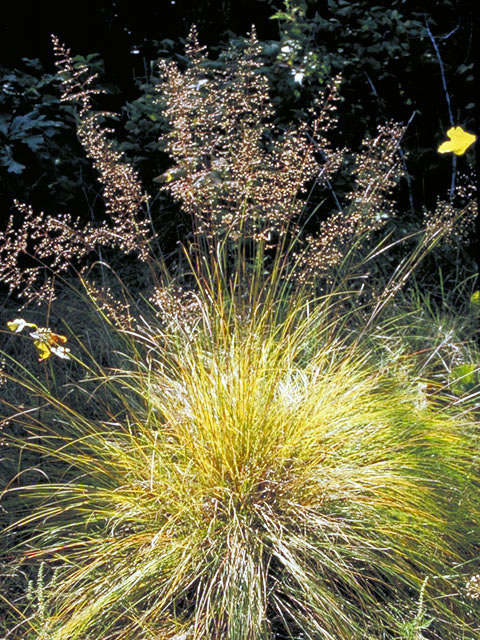
Photo credit: https://www.wildflower.org/gallery/result.php?id_image=100
I am always on the lookout for plants that retain colour and form during the drab winters in Ontario and Prairie Dropseed (Sporobolus heterolepis) does not disappoint. S. heterolepis is a C4 plant, which means that when it photosynthesizes it creates a four-carbon molecule using the Hatch-Slack pathway. The interesting thing about C4 plants is that you can identify them with a hand lens due to a specialized feature in their leaf structure called Kranz anatomy.
Kranz means wreath or ring, and that is exactly what you see under the lens; a ring of cells surrounding the bundle sheath! If you do not see the ring, you are looking at a C3 plant (80% of plants) or a CAM plant (epiphytes – bromeliads and xerophytes – cacti) I urge everyone to get a hand lens and start looking at the structures of plants, you won’t believe the complex beauty revealed to you. The first step to knowing is noticing!
Prairie Dropseed (Sporobolus heterolepis) is a perennial warm season (C4) clumping grass that is native to most of North America. As a C4 grass, it is both drought resistant and tolerant of heat due in part to its more efficient pathway of photosynthesis. C4 grasses also sequester more CO2 and are better at nitrogen fixation than C3 plants. C4 and CAM plants are great selections for a changing climate and a healthy garden ecosystem that requires less fertilization and irrigation.
Family – Poaceae – Poa (Grass) – The grass family is probably the most important family for human survival; it is responsible for all our cereal crops (corn, oats, rice) feeding our dairy and meat animals, and providing building materials and bedding (Bamboo, straw, thatch). Grasses can be annual or perennial, C3 (Cool season) or C4 (Warm season) and are found on every continent in the world! I could never talk about grasses and not share my favourite identification rhyme: “Sedges have edges, rushes are round, grasses have nodes all the way to the ground.”
Genus – Sporobolus – Sporo (Seed) ballein (to throw) – Members of this genus have dehiscent seeds; the fruit structure bursts or splits to release the seeds. A pea pod is an example of a dehiscent seed, a pumpkin is an example of an indehiscent seed. In the case of
Prairie Dropseed, the seed pod releases slowly throughout the fall and winter, both protecting the seeds and timing dispersal for increased chance of germination. The long spire and seed holding of Sporobolus heterolepis creates a wonderful wispiness that has made this plant a
horticultural star.
Species – heterolepis – Hetero (dissimilar) lepis (scale) – The scale in this case is a glume (a bract surrounding spikelet in grasses) which are uneven in this species. This sun-loving and bunch forming grass adds a great deal of interest to our landscapes throughout the year.
Although it can grow to a meter tall and wide Prairie Dropseed is slow growing, taking four years to reach maturity and go to seed. Despite its dehiscent seeds you won’t have to worry about this grass taking over as they are notoriously difficult to germinate. Use Sporobolus
heterolepis in meadow plantings, formal gardens, green roofs, lawn alternatives, rock gardens, and for erosion control. It also provides a habitat for pollinators, is deer resistant, tolerant of most soils we have in Ontario, retains its shape even in the heaviest snow squalls, and it is juglone tolerant (remember that juglone comes from Black Walnuts (Juglans nigra)).
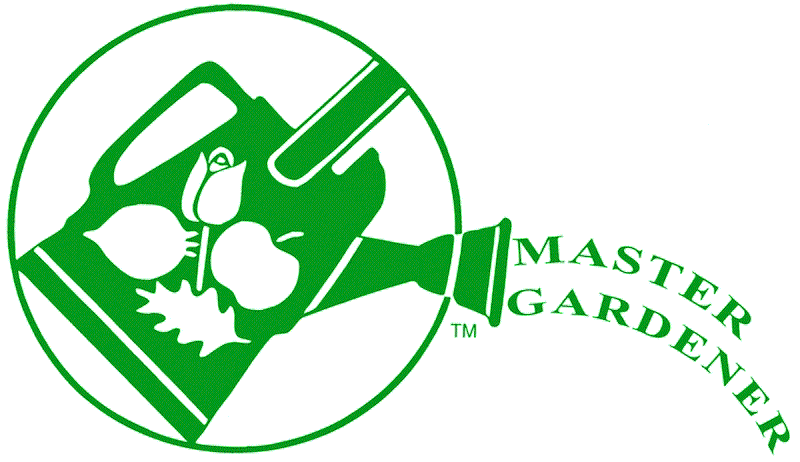
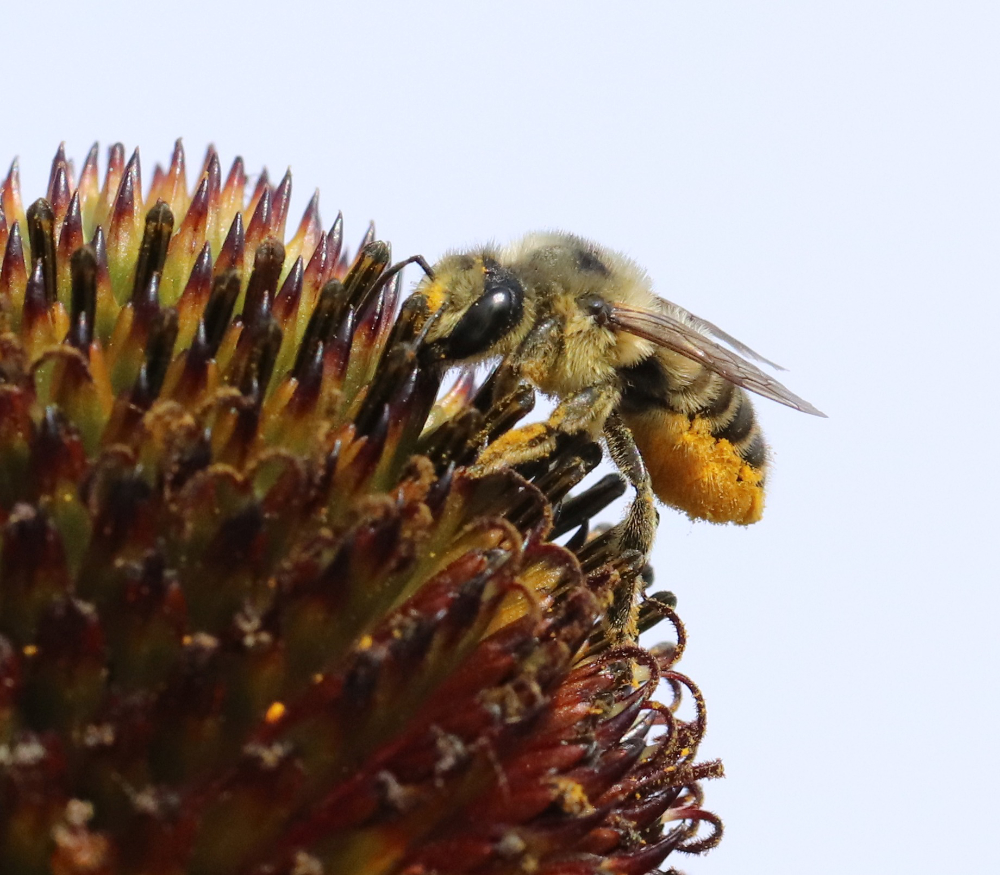

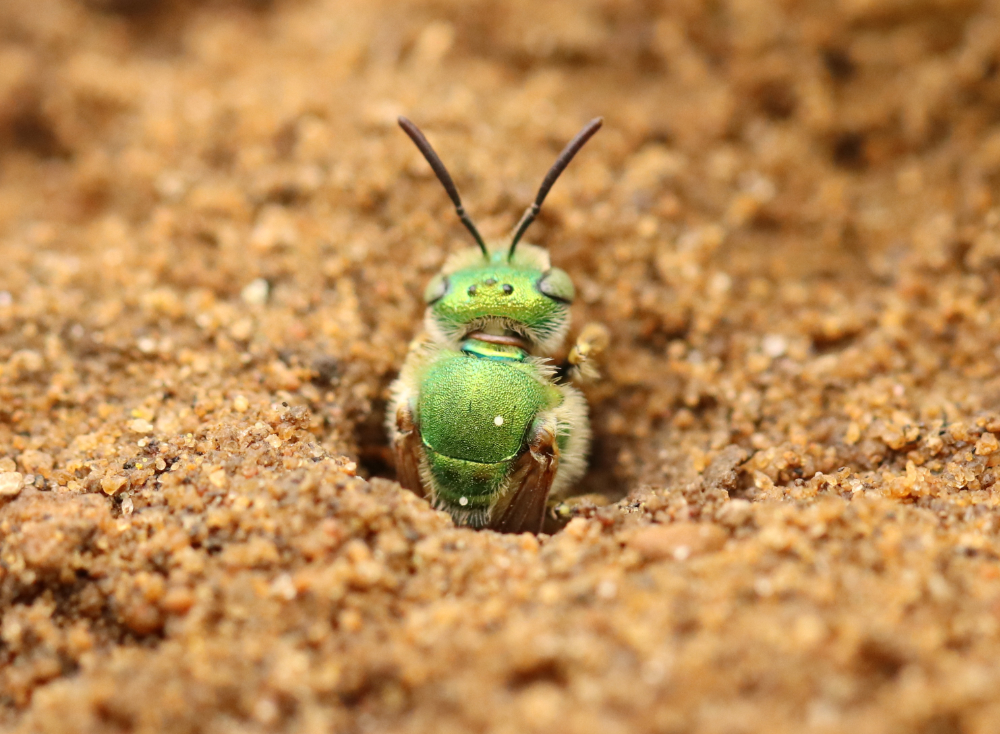
About The Author: Beth Warner
More posts by Beth Warner